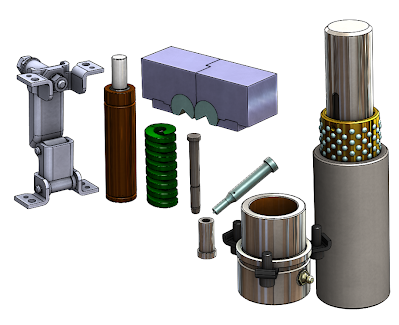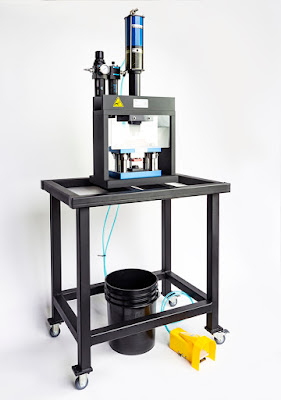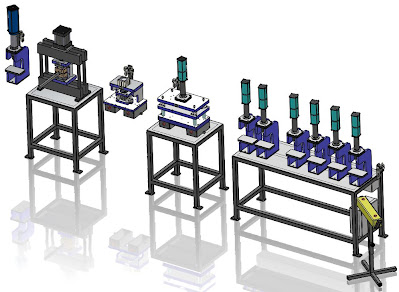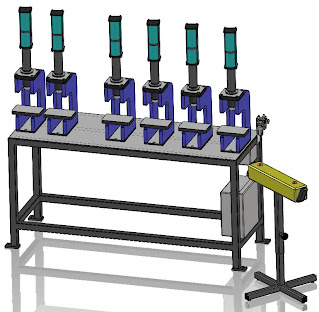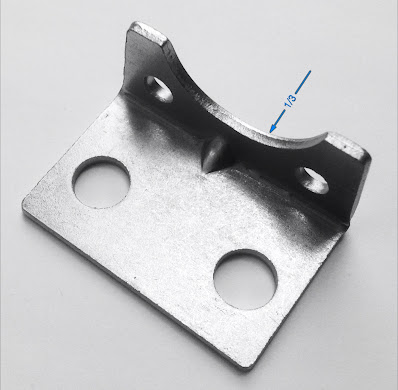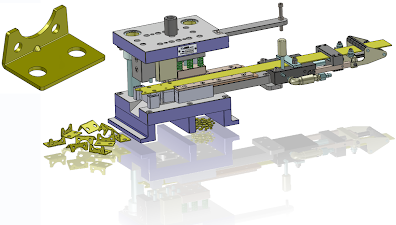Design considerations for metal stamping tools and dies
Metal stamping die design considerations or decisions are driven by a number of factors in tool and die design.
However there are a few mayor points that should not be missed and must be included in the decision making process. You could design and build an inexpensive fabricated tool or you could make one that is a top of the line master piece.
How do You Decide Which One to Make?
Your customer will tell you what they need, what material the stamped parts are, how many parts should be stamped, when they want the finished parts, and how much they are willing to pay and so on.These are important guide lines toward the metal stamping die design. They tell you what you can do and what you can’t. They set some boundaries.
The part itself is one of the major contributors that guide you through what the minimum requirements are toward the tool. It will help you with what you need in order to produce the particular part.
You may raise questions that need to be answered. How efficiently will the parts be produced? How long will the tool last? How user friendly should the tool be? What are the variables that can be implement in the design?
The Above General Guide Lines Should be Specified More in Detail
- How many parts will be produced per run, monthly or in the lifetime of the tool? If the amount of production is low, you will know that the tool will likely be manually operated and be budget oriented. If e.g. 5,000 parts are to be made every week for the next two years, than you know it is a high demand tool and automation and continuous operation is required. The tool must be designed accordingly. More time and money can be spent to make the suitable tooling.
- Low production rate equals inexpensive tooling components, unsophisticated guides, supports, etc.
- On the other hand if the metal stamping tool is running all the time, then you will need to build a tool that lasts. It will require less frequent tool and die maintenance, and be built for high speed automation. The tool steel should be higher quality, and more suitable for extended use. In this case instead of using e.g. A2 or D2 material, consider using M2 with coated surfaces or Vanadis 4 Extra or comparable. For the extra cost, these tool steel will last many times longer before sharpening is required. Use a ball bearing guide system, instead of standard bronze plated bushings and standard die pins. The ball guided system is better for high speed punch presses and high speed stamping.
- Pressure plates require springs behind them to generate enough force. Consider using gas springs. They are generally suitable for high speed stamping, and about 250 spm and rated about 1 million strokes before servicing. They are also more powerful than conventional die springs with the same footprint. You can use punches with ejector pins in them to push off slugs that are serious obstacles in automated stampings. You can also use die buttons with slug control that keep the slugs in the die button, preventing slug pulling. Slugs pulled back onto the die surface area can jam the strip and cause the feeder to buckle the coil. If this happens, your tooling may be at risk for serious damage.
- Bending is generally done using a wipe form method. The parts eventually gull and have heavy marks. The form sections constantly require polishing, causing downtime and quality issues. Ready benders can eliminate most of these problems, where the bends have simple straight features. This method completely eliminates parts sticking into the form die, as they require less pressure and will not mark the part as much or just simply eliminate it altogether. It is a perfect solution for pre-painted strips to stamp.
- Stock pushers are designed for automated stamping and have a superior feature that make their use a preferred choice.
- At upstroke of the press, they release the force applied to the edge of the strip or coil entirely, allowing a resistance free strip advancement. The applied pressure is adjustable, and you can design the engagement timing as you need it. The pilot punches can locate the strip perfectly before you lock its position for the duration of the cut.
- Another contributor to your metal stamping tooling design is to know what press or presses will be used for stamping. Your tool must be compatible and fit the desired press or presses. You may want to consider making 3D models of the presses with the vital features that are necessary for your tool design.
- The general requirement toward any stamping tool and for their design is that it should cost as little as possible, yet produce the most amount of parts at the best quality, should not break down, and will last longer than the anticipated life span of the tool. This perfect scenario should be achieved at all times. Compromises sometimes must be made and accepted, but not be part of your design.
- The guide lines or restrictions that are set by your client, your tool and die manufacturing facility or your ability, will have an impact of the outcome of your design and ultimately of the stamping tools and the produced parts.

